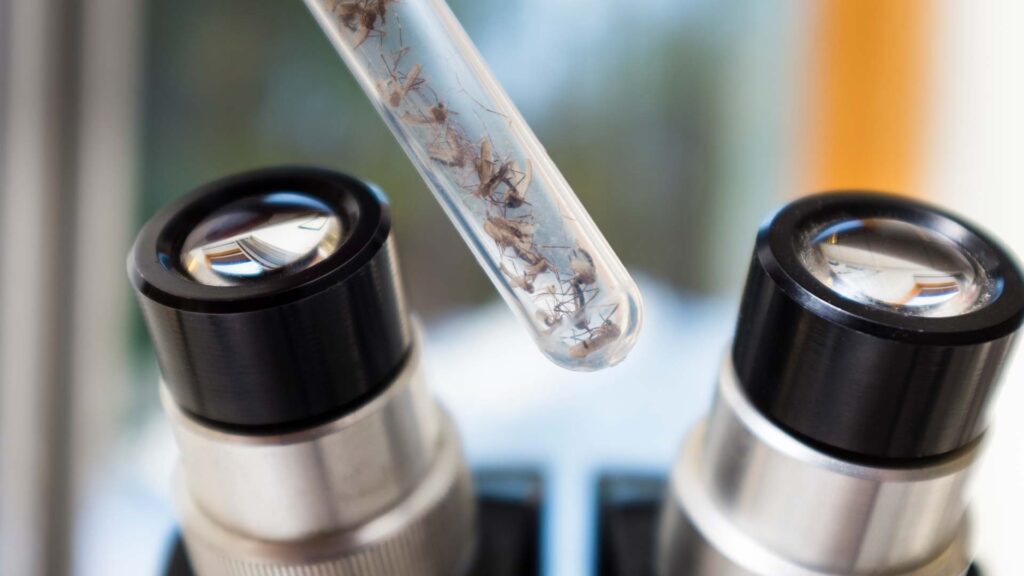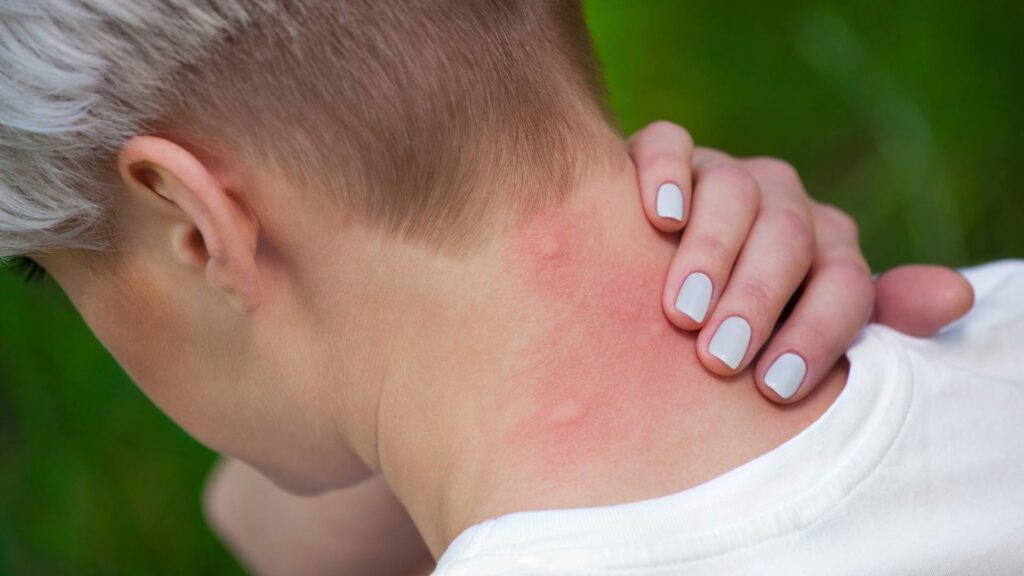Do Mosquitoes Carry Disease?
Zika and West Nile viruses are emerging threats in the realm of mosquito-borne diseases. Zika, primarily spread by Aedes mosquitoes, gained prominence in 2015 due to its rapid spread and potential to cause birth defects. West Nile virus, identified in Uganda in 1937, has become a significant concern in the United States, with outbreaks leading to severe illnesses like encephalitis. Both viruses underscore the growing need for effective mosquito control and public health measures to combat these evolving threats.

As the sun sets and the evening air cools, a familiar, yet ominous hum begins to fill the backyards and outdoor spaces of homes around the world. This sound, often the precursor to the all-too-familiar itchy welt, is the calling card of one of the planet’s most deceptively dangerous creatures: the mosquito. Far from being mere backyard pests, these tiny insects are vectors for some of the most devastating diseases known to humanity, turning our homes into potential hotspots for global health crises.
The threat posed by mosquitoes is not just a matter of discomfort or irritation. These insects are the primary carriers of diseases such as malaria, dengue fever, Zika virus, and West Nile virus, each of which can have severe, sometimes fatal, consequences. The World Health Organization (WHO) estimates that every year, millions of people worldwide are affected by mosquito-borne diseases, with some regions being particularly hard-hit.
Malaria, for instance, is a life-threatening disease caused by parasites transmitted to people through the bites of infected female Anopheles mosquitoes. Despite significant efforts to control the disease, it continues to be a major health problem in many tropical and subtropical regions. According to recent data, there were an estimated 241 million cases of malaria worldwide in 2020, resulting in about 627,000 deaths, most of them children in Africa.
Dengue fever, another illness spread by mosquitoes, particularly the Aedes aegypti species, has seen a dramatic rise in cases over the past few decades. Once confined to a few areas of the world, dengue is now prevalent in more than 100 countries, making it a growing public health concern. The disease is often characterized by high fever, severe headache, pain behind the eyes, joint and muscle pain, rash, and mild bleeding. Severe dengue can be potentially deadly, especially without proper medical care.
In more recent years, the world has witnessed the emergence and spread of the Zika virus, primarily transmitted by Aedes mosquitoes. First identified in Uganda in 1947, Zika gained global attention in 2015 and 2016 when an outbreak in Brazil led to cases of Guillain-Barré syndrome and microcephaly in babies born to infected mothers. This outbreak highlighted the potential for relatively unknown mosquito-borne diseases to become significant public health emergencies.
Similarly, the West Nile virus, which is primarily transmitted to humans by the bite of an infected mosquito, has become a health concern in many parts of the world, including the United States. Most people infected with the virus do not feel sick, but about 1 in 5 people develop a fever and other symptoms, and about 1 in 150 infected people develop a serious, sometimes fatal, illness.
The presence of mosquitoes and the diseases they carry is a stark reminder of the interconnectedness of global health and the importance of vigilance in our own backyards. As we enjoy the comfort of our homes and the beauty of our outdoor spaces, it’s crucial to remember that these common pests are more than just a nuisance; they are carriers of diseases that have shaped human history and continue to pose a significant threat to our health and well-being.
The Menace of Mosquito-Borne Diseases
Mosquitoes, often underestimated as mere backyard pests, are in fact vectors for some of the most devastating diseases known to humanity. Their ability to carry and transmit disease to humans causes millions of infections worldwide each year.
Malaria, caused by Plasmodium parasites transmitted through the bite of infected Anopheles mosquitoes, remains one of the deadliest mosquito-borne diseases. The World Health Organization (WHO) reports that nearly half of the world’s population is at risk of malaria, with the majority of cases and deaths occurring in sub-Saharan Africa. Despite significant efforts to control the disease, malaria continues to claim hundreds of thousands of lives annually, particularly among children under five years old.
Dengue fever, transmitted by Aedes mosquitoes, is the fastest-growing mosquito-borne viral disease in the world. The WHO estimates that 390 million dengue infections occur each year. Severe dengue, a potentially lethal complication, was once a rare occurrence but has now become more frequent. The disease is now endemic in more than 100 countries, with recent outbreaks in previously unaffected areas, signaling a worrying expansion of the disease’s geographical reach.
The Zika virus, also spread by Aedes mosquitoes, emerged as a global health concern in 2015 when a significant outbreak in Brazil was linked to a spike in cases of microcephaly in newborns. The virus has since spread to other parts of the world, with reported cases in the Americas, Southeast Asia, and the Pacific Islands. While most Zika virus infections are mild, the risks to pregnant women and their fetuses have made it a priority for international health organizations.
Chikungunya, another disease transmitted by Aedes mosquitoes, causes debilitating joint pain that can last for months or even years. First identified in Tanzania in 1952, it has since spread to more than 60 countries. The West Nile virus, primarily spread by Culex mosquitoes, has become the most common mosquito-borne disease in the United States since its introduction in 1999. While most infected people show no symptoms, a small percentage develop serious neurological illnesses.
Yellow fever, although controllable through a highly effective vaccine, still causes significant outbreaks, particularly in Africa and South America. Japanese encephalitis, transmitted by Culex mosquitoes, remains a serious concern in Asia, with approximately 68,000 cases reported annually.
The global impact of mosquito-borne diseases is profound, affecting economies, societies, and the health of populations, particularly in tropical and subtropical regions. In response, international and national health agencies have intensified efforts to control mosquito populations, develop vaccines, and improve public health measures. However, challenges such as climate change, urbanization, and the spread of mosquito resistance to insecticides complicate these efforts.
The threat posed by mosquito-borne diseases is a stark reminder of the interconnectedness of global health and the importance of sustained efforts to combat these diseases. While progress has been made, the fight against these diseases remains a high priority for global health security.
Key Global Initiatives Against Mosquito-Borne Diseases
| Initiative | Organization | Focus Area |
|---|---|---|
| Roll Back Malaria | WHO, UNICEF, World Bank | Malaria control and eradication |
| Global Dengue & Aedes-Transmitted Diseases Consortium (GDAC) | International Consortium | Dengue and other Aedes-transmitted diseases |
| Vector Control Advisory Group (VCAG) | WHO | Evaluation of new vector control tools |
| Innovative Vector Control Consortium (IVCC) | Public-private partnership | Development of new insecticides and repellents |
| Eliminate Yellow fever Epidemics (EYE) Strategy | WHO | Yellow fever control and prevention |
| Global Health Security Agenda (GHSA) | International Partnership | Enhance global capacity to prevent, detect, and respond to infectious disease threats |
Zika and West Nile: Emerging Threats
In recent years, the world has witnessed the emergence of two significant mosquito-borne diseases: Zika and West Nile virus. These diseases have not only caused widespread concern but have also highlighted the evolving nature of mosquito-borne illnesses and the need for vigilant public health measures.
The Zika virus, primarily transmitted by the Aedes aegypti mosquito, first came into the global spotlight in 2015 when a major outbreak occurred in Brazil. It quickly spread to other parts of South and North America. The virus is particularly alarming because it can cause microcephaly, a severe birth defect where babies are born with abnormally small heads and underdeveloped brains, and other congenital abnormalities.
The outbreak led the World Health Organization (WHO) to declare Zika a Public Health Emergency of International Concern in 2016. This prompted intensified research into the virus, leading to better diagnostic methods and efforts towards developing a vaccine. However, as of now, there is no specific treatment or vaccine available for Zika virus infection, making prevention strategies crucial.
The West Nile virus, on the other hand, has been known since 1937 but gained notoriety in the late 1990s following an outbreak in New York City. Unlike Zika, most people infected with the West Nile virus do not develop symptoms. However, about 20% develop a fever, and less than 1% of infected people develop a serious, sometimes fatal, neurologic illness.
Zika Virus – A Modern Menace
First identified in Uganda in 1947 in monkeys, Zika was later found in humans in 1952.
The major outbreak in Brazil in 2015 brought Zika to global attention, highlighting its rapid spread and potential complications.
Transmission and Symptoms
Primarily spread by Aedes mosquitoes, particularly Aedes aegypti.
Symptoms include fever, rash, headache, joint pain, red eyes, and muscle pain, though many cases are asymptomatic.
Crucially, Zika can cause birth defects, such as microcephaly, in babies born to infected mothers.
Prevention and Control
No vaccine or specific treatment for Zika.
Prevention focuses on avoiding mosquito bites and controlling mosquito populations.
Public health advice includes using insect repellent, wearing long-sleeved clothing, and eliminating standing water.
The virus, primarily transmitted by the Culex species of mosquitoes, has now spread across the United States, Europe, Africa, Asia, and Australia. Its ability to cause severe illness in a small percentage of those infected, coupled with its widespread distribution, makes it a persistent public health concern.
For both Zika and West Nile viruses, the primary prevention strategy is mosquito control and personal protection against mosquito bites. This includes using mosquito repellents, wearing long-sleeved shirts and long pants, and eliminating standing water where mosquitoes breed.
Public health agencies also play a crucial role in surveillance and control efforts. This includes monitoring mosquito populations, implementing mosquito control programs, and educating the public about how to protect themselves from these diseases.
As the world grapples with these emerging threats, ongoing research and surveillance are critical. Efforts to develop vaccines and treatments continue, and understanding the patterns of these diseases can help predict and prevent future outbreaks. The fight against Zika and West Nile viruses is not just a matter of public health but also a reminder of our interconnectedness with the global ecosystem.
Combating the Mosquito Menace
Combating the mosquito menace requires a multifaceted approach, blending individual responsibility with community action and scientific innovation. Homeowners are the first line of defense. Beyond eliminating standing water, they can install window and door screens to prevent mosquitoes from entering homes. Planting mosquito-repelling plants like citronella, lavender, and marigold can also be effective. For outdoor areas, mosquito traps and bug zappers can reduce the mosquito population.
On a community level, public health departments often conduct regular mosquito surveillance and control programs. These include spraying insecticides in high-risk areas and introducing natural predators like dragonflies or genetically modified mosquitoes to reduce the mosquito population. Educational campaigns are also crucial, informing the public about the risks of mosquito-borne diseases and the importance of preventive measures.
In the realm of scientific research, advancements are continually being made. Development of vaccines for diseases like dengue and Zika is ongoing, with some showing promising results in early trials. Scientists are also exploring innovative methods like the use of Wolbachia bacteria to make mosquitoes less capable of transmitting viruses. These efforts, combined with individual and community actions, form a comprehensive strategy to combat the threat posed by mosquitoes.
Community Efforts and Global Initiatives
Community efforts and global initiatives play a pivotal role in combating the spread of mosquito-borne diseases. Locally, many communities have established mosquito control programs that focus on reducing the population of these pests. These programs often involve regular monitoring of mosquito populations and the application of environmentally friendly larvicides in areas where water cannot be easily drained. Public education campaigns are also a crucial aspect of these programs, informing residents about the importance of eliminating standing water and taking personal protective measures.
Globally, organizations such as the World Health Organization (WHO) and the Centers for Disease Control and Prevention (CDC) are at the forefront of the fight against mosquito-borne diseases. These organizations collaborate with countries around the world to improve disease surveillance, provide resources for mosquito control, and support research into new technologies and strategies for disease prevention. For instance, the WHO’s Global Vector Control Response aims to strengthen countries’ capacities to prevent and control vector-borne diseases, including those spread by mosquitoes. Additionally, initiatives like the Roll Back Malaria partnership and the Global Dengue & Aedes-Transmitted Diseases Consortium (GDAC) focus on specific diseases, working towards controlling and eventually eradicating them through a combination of research, advocacy, and on-the-ground interventions. These global efforts are crucial in the fight against mosquito-borne diseases, as mosquitoes do not respect borders, and a coordinated international response is essential to effectively manage these public health threats.
A Comprehensive Approach to Mosquito Control: Safeguarding Our Homes and Health
The threat posed by mosquitoes extends beyond the annoyance of their bites. These tiny insects are vectors for some of the most devastating diseases known to humanity. As homeowners and community members, our role in combating this threat is not just a matter of convenience but of public health and safety.
Homeowners are the first line of defense against the spread of mosquito-borne diseases. Simple measures, such as eliminating standing water in yards, can significantly reduce mosquito populations. This includes regularly emptying containers that collect rainwater, maintaining swimming pools, and ensuring proper drainage in gardens.
In addition to environmental control, personal protection is crucial. Using EPA-approved insect repellents, wearing protective clothing, and installing window and door screens can greatly reduce the risk of mosquito bites. Educating family members, especially children, about the importance of these measures is equally important.
Mosquito control is most effective when communities work together. Participating in local mosquito control programs, staying informed about outbreaks in the area, and reporting high mosquito activity to local health departments are ways individuals can contribute to broader efforts.
Communities can also adopt innovative solutions like introducing natural predators of mosquitoes, such as certain fish species in ponds, or exploring environmentally friendly insecticides. Public education campaigns focusing on the risks of mosquito-borne diseases and prevention strategies are also vital.
On a larger scale, government policies and research play a pivotal role. Supporting policies that promote research into mosquito control and disease prevention is crucial. This includes funding for the development of vaccines and treatments for diseases like malaria, dengue, and Zika.
Research into genetically modified mosquitoes, which could potentially reduce mosquito populations or their ability to transmit diseases, is another promising area. However, these solutions require careful consideration of ecological and ethical implications.
Mosquito-borne diseases are a global issue, requiring international cooperation. Supporting global health initiatives and contributing to international aid efforts can have a significant impact. This is particularly important for developing countries, where the burden of these diseases is often the heaviest.
The battle against mosquito-borne diseases is ongoing. It requires a multifaceted approach, combining individual actions with community efforts, supported by strong policies and research. As homeowners and global citizens, our vigilance and proactive measures can make a substantial difference in safeguarding our homes and health against the threat of mosquitoes. By working together, we can hope to reduce, and eventually eliminate, the impact of these dangerous diseases.
Frequently Asked Questions About Diseases Mosquitoes Carry
Do all mosquitoes carry diseases?
Not all mosquitoes carry diseases. Only certain species are vectors for specific diseases. For example, the Aedes aegypti mosquito is known for spreading dengue, Zika, and chikungunya, while the Anopheles mosquito is primarily responsible for transmitting malaria.
What diseases are most commonly spread by mosquitoes?
The most common diseases spread by mosquitoes include malaria, dengue fever, Zika virus, West Nile virus, chikungunya, and yellow fever. The prevalence of these diseases varies by geographic location and climate.
How do mosquitoes transmit diseases?
Mosquitoes transmit diseases through their bite. When a mosquito bites an infected person or animal, it can pick up the virus or parasite. The disease is then passed on when the mosquito bites another person.
Can mosquitoes transmit HIV/AIDS?
No, mosquitoes cannot transmit HIV/AIDS. The virus does not survive within the mosquito’s body, making it incapable of transmitting HIV from one person to another.
Are certain people more at risk of getting diseases from mosquitoes?
While anyone can be bitten by a mosquito and potentially contract a disease, individuals with weakened immune systems, the elderly, and young children are often at higher risk for severe complications from mosquito-borne diseases.
How can I protect myself from mosquito-borne diseases?
Protection measures include using insect repellent containing DEET, Picaridin, or oil of lemon eucalyptus, wearing long sleeves and pants, installing window and door screens, using mosquito nets, and eliminating standing water around your home to prevent mosquito breeding.
Is there a vaccine for mosquito-borne diseases?
Vaccines are available for some mosquito-borne diseases like yellow fever and Japanese encephalitis. However, for many others, such as dengue and malaria, vaccines are either in development or have limited availability.
What should I do if I think I have a mosquito-borne disease?
If you experience symptoms such as fever, headache, rash, joint pain, or muscle pain after a mosquito bite, it’s important to seek medical attention promptly. Early diagnosis and treatment are crucial for many mosquito-borne diseases.
Can mosquito-borne diseases be treated?
Treatment varies depending on the disease. Some, like certain types of malaria, have effective treatments available, while others, such as dengue, mainly involve supportive care to manage symptoms.
Are mosquito-borne diseases a concern in colder climates?
Mosquito-borne diseases are primarily a concern in warmer climates where mosquitoes are prevalent year-round. However, global travel and climate change are expanding the range of disease-carrying mosquitoes, making it a growing concern in regions with traditionally colder climates.




